POLLYANNA JONES suggests it’s not a good idea to go messing with William Shakespeare’s skull
“Good frend for Jesus sake forbeare,
to digg the duste encloased heare.
Bleste be ye man yt spares thes stones,
And curst be he yt moves my bones.”*
*For the sake of ease of understanding the words, bear in mind that “y” in “ye” and “yt” is pronounced as “th”.
These are the words of William Shakespeare, found at his grave in Holy Trinity Church, Stratford-upon-Avon.
A peaceful place, Holy Trinity sits serenely on the banks of the river a little downstream from the Royal Shakespeare Theatre. The church is popular with visitors to the town, who admire the historic architecture and pay their respects to the Bard.
Article: Shrieve’s House, where history and hauntings collide
Why would England’s most celebrated playwright have such a curse inscribed upon his grave?
During Shakespeare’s lifetime, the dead were often disturbed after being laid to rest. This was sometimes done by the medical professions who needed bodies to study, and sometimes it was done to clear more space.
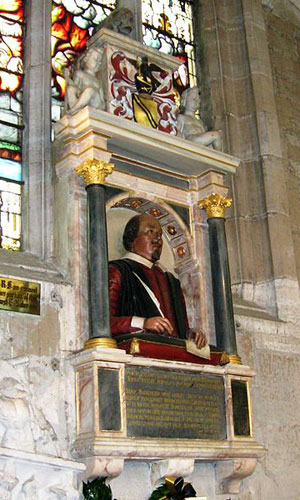
It was not uncommon for bones to be exhumed to make way for a freshly deceased corpse.
There are only so many graves that will fit into a graveyard; less so inside a church itself, such as where Shakespeare’s body lies. Many churches had a charnel house nearby, which was a building or vault used to store skeletal human remains. Any bones that were exposed whilst digging a new grave would be thrown into here, as would the remains of any that were in the way for a new burial.
Worse still, some bones found their way to landfill or were ground up in bone mills to make fertiliser.
It is said that Shakespeare was horrified by the prospect of his own bones being treated in such a way, and so this grim warning was inscribed on a plaque that was laid upon his grave within the church.
After his death in 1616, Shakespeare was buried within Holy Trinity, comfortable in the knowledge that no-one would dare risk the ire of the restless dead. There beneath cold stone he slept for many years before some brigand chanced that he might test the words inscribed.
There is an account of mischief from 1794, whereby diners at Ragley Hall told a story of a wager to recover Shakespeare’s skull. In the nearby town of Alcester, only 10 miles from Stratford, a reward of £300 was offered for any who would bring the skull back to Sir Horace Walpole. This was an absolute fortune in those days, and so it is no surprise that someone took him up on it.
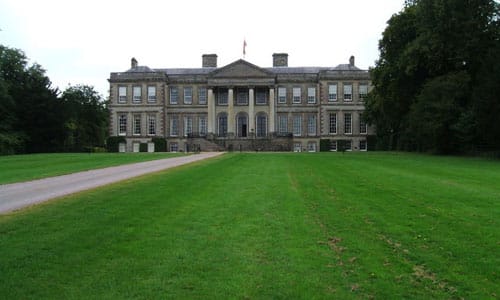
Dr Frank Chambers hired three local men to break in and raid the tomb. He paid his lackeys £3 each which they eagerly accepted, and he greedily awaited their return. His gang were triumphant and delivered him a skull, claiming that it was that of William Shakespeare.
Despite their success, Walpole refused to keep his side of the bargain and claimed that he had only been joking when his offer was made. The doctor was ordered to have the skull sent back, but before doing so, he chipped out a piece for a souvenir.
It is said that when the gang returned to Holy Trinity, they were unable to move the slab on the stone, and so hid the skull. When the theft was discovered, a spare skull was hastily placed in Shakespeare’s grave to avoid any scandal.
Fifty years later, a skeleton was discovered 15 miles away at St Leonard’s Church, Beoley, that had one skull too many. Intriguingly, the skull had a chip removed from it, and when matched up with the sliver of bone chipped out by Dr Chambers, was a perfect fit.
Shakespeare’s skull had been found. It was taken back to Holy Trinity in Stratford and laid to rest with the rest of The Bard’s remains.
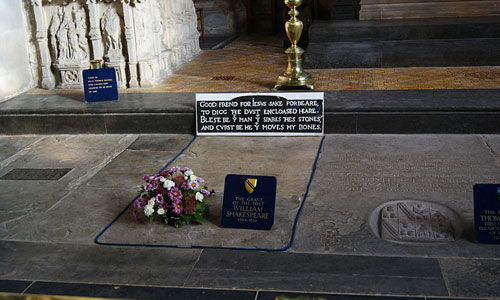
A word of warning. No doctor by the name of Frank Chambers was ever recorded as having resided or worked in Alcester. The whole story might have been a fabrication to liven up an evening at Ragley Hall.
Only digging up Shakespeare’s grave and finding a chipped skull would prove this tale to be true. But with a curse on the bones, who would dare?



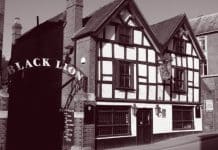

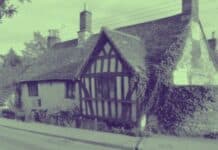


Another wonderfully macabre story Polly!
Many a story or fable with elements of the truth make the lore bigger than life. Enjoyable tidbit.